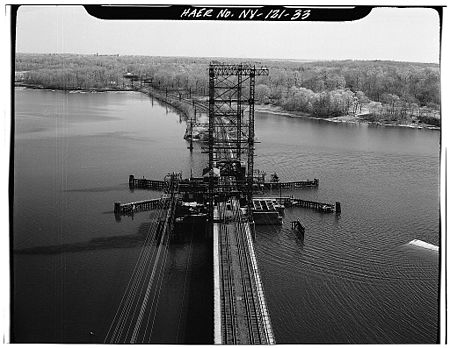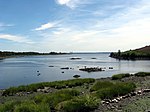Pelham Bay Bridge

The Pelham Bay Bridge, also known as the Amtrak Hutchinson River Bridge, is a two-track movable railroad bridge that carries the Northeast Corridor (NEC) over the Hutchinson River in the Bronx, New York, upstream from the vehicular/pedestrian Pelham Bridge. It is owned by Amtrak, which provides passenger service, and is used by CSX Transportation and the Providence & Worcester Railroad for freight traffic. The New York, New Haven and Hartford Railroad completed construction of the bridge in 1907. Amtrak partially rehabilitated it in 2009. The bridge is obsolete and requires extensive ongoing maintenance, with speeds restricted to 45 miles per hour (72 km/h). The lift span is manned and required to open on demand; it does so several times per day for commercial boats.Amtrak plans to replace the bridge with a new high-level fixed bridge with clearance for maritime traffic. Preliminary work began in 2013. MTA's Metro-North Railroad has proposed the Penn Station Access using the bridge for a so-called Hell Gate Line service which would allow some New Haven Line trains to access New York Penn Station. In January 2019, Amtrak and the MTA reached an agreement regarding Penn Station Access. As part of the deal, the MTA would pay to replace the Pelham Bay Bridge.
Excerpt from the Wikipedia article Pelham Bay Bridge (License: CC BY-SA 3.0, Authors, Images).Pelham Bay Bridge
Shore Road, New York The Bronx
Geographical coordinates (GPS) Address External links Nearby Places Show on map
Geographical coordinates (GPS)
| Latitude | Longitude |
|---|---|
| N 40.8634 ° | E -73.8179 ° |
Address
Pelham Bay Bridge
Shore Road
10475 New York, The Bronx
New York, United States
Open on Google Maps







